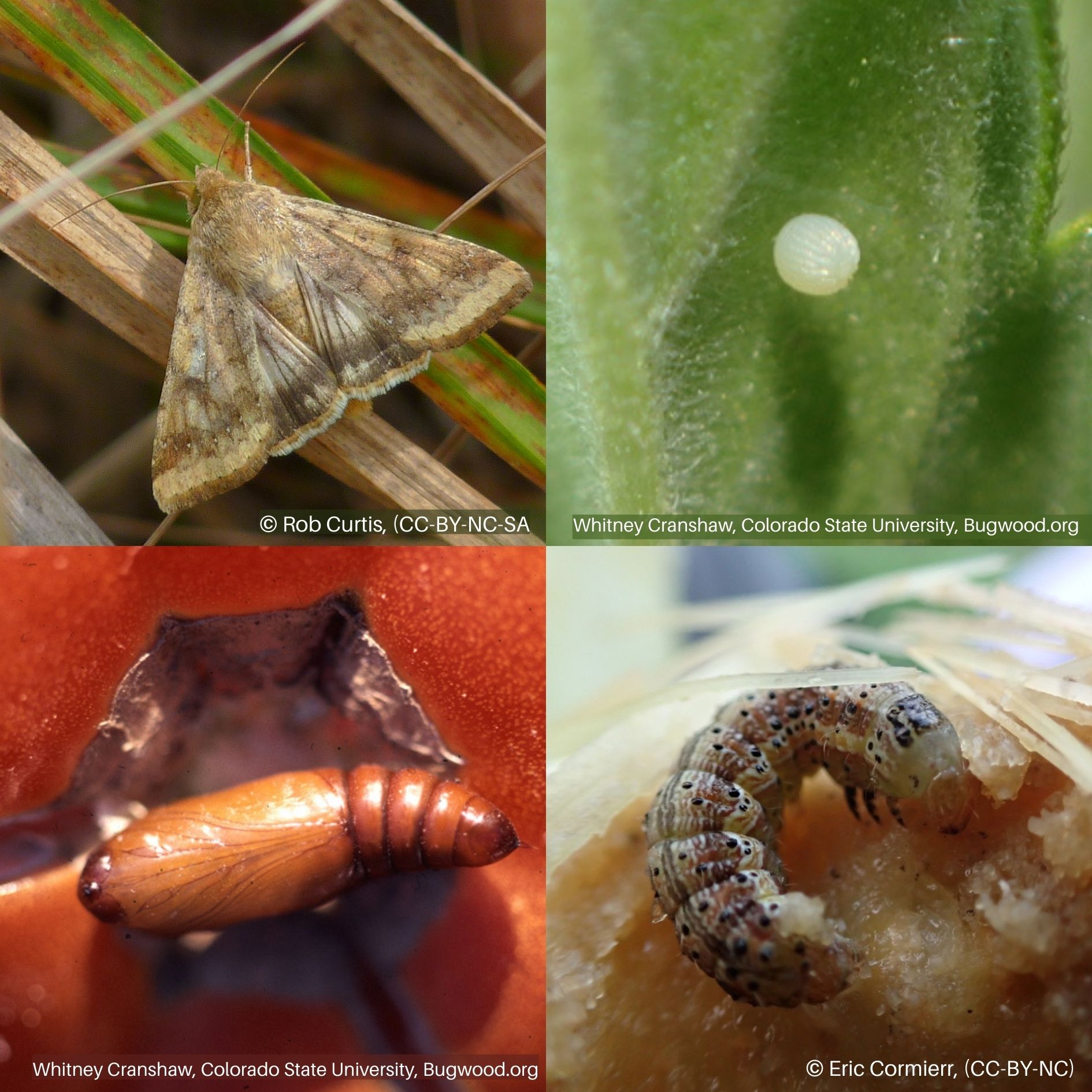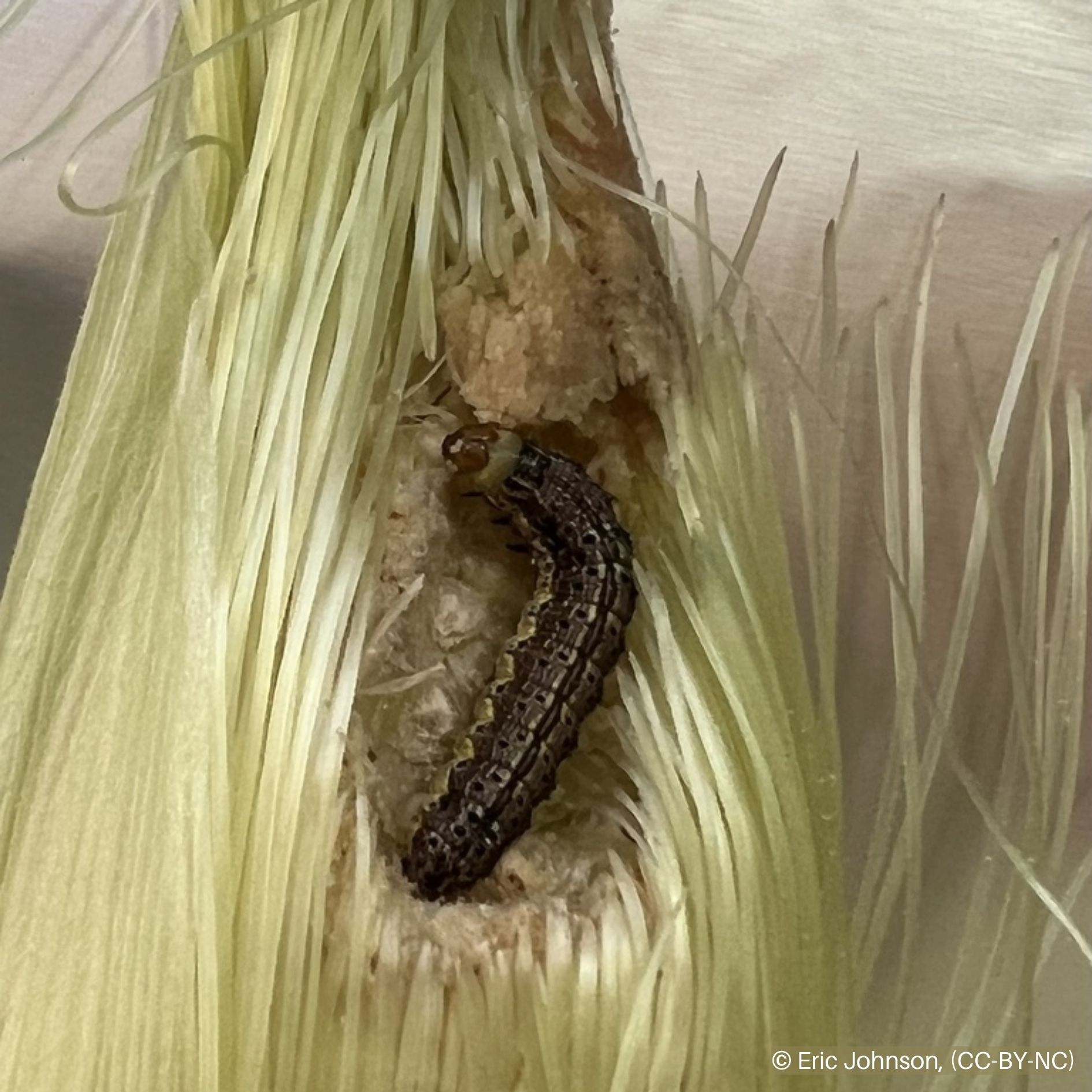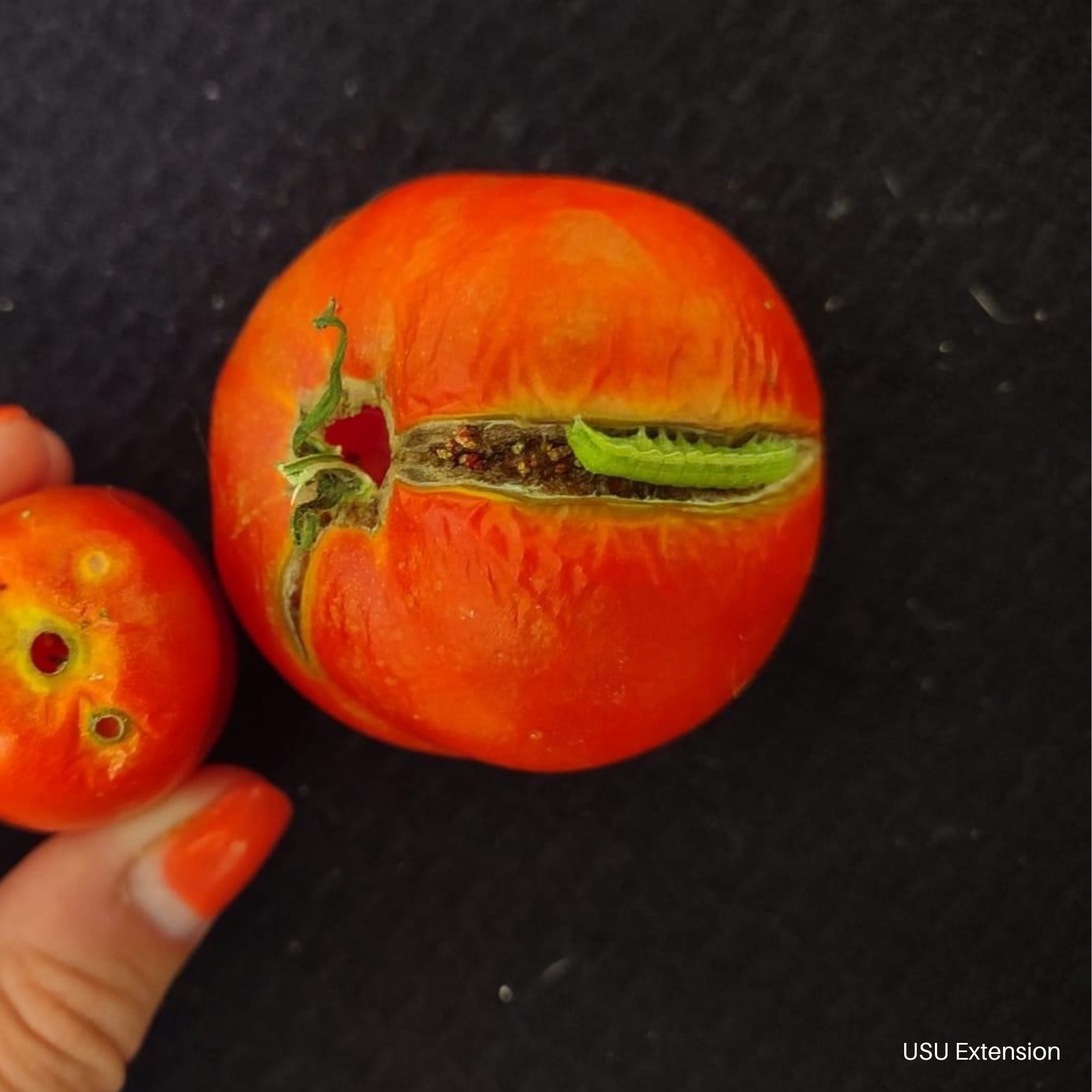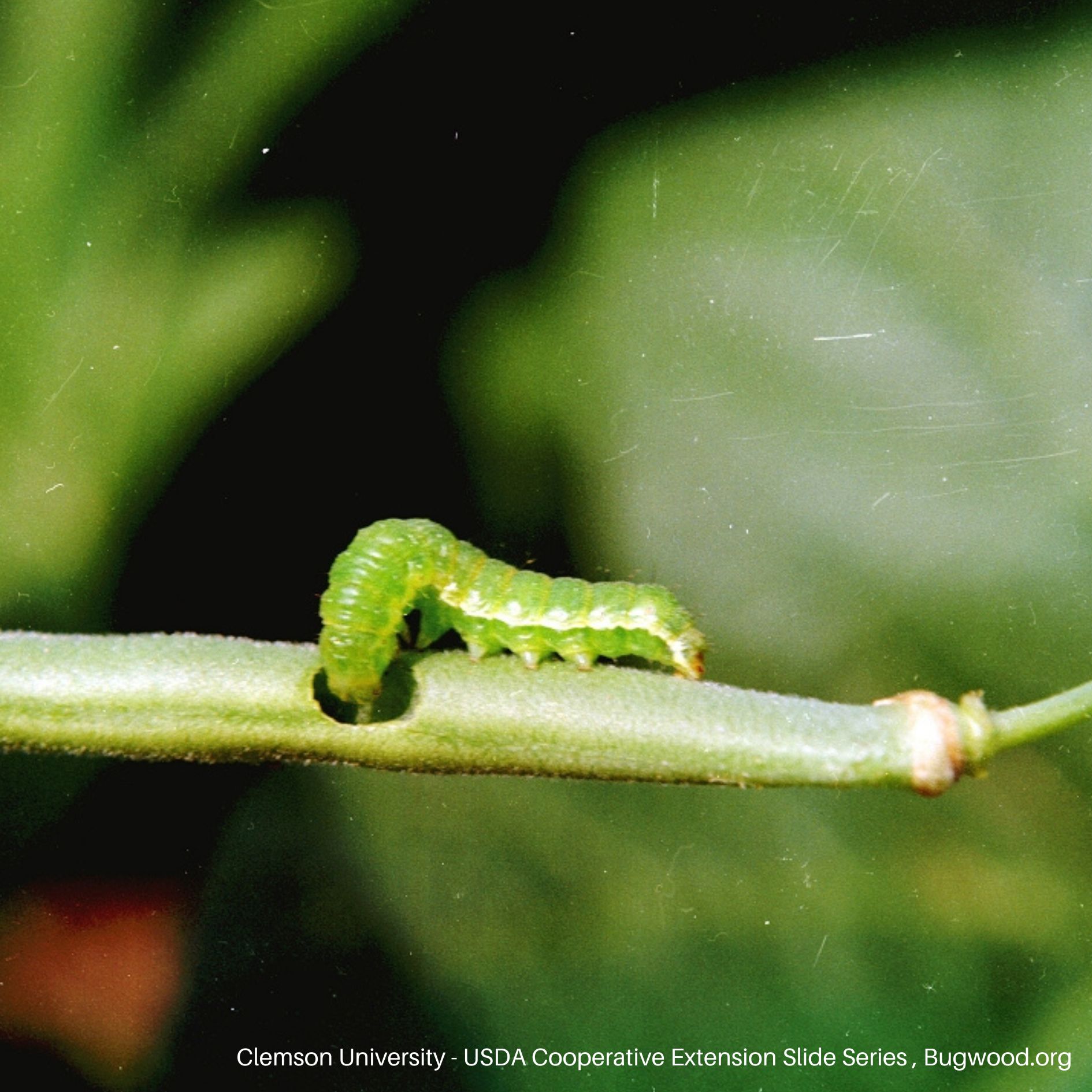Corn Earworm / Tomato Fruitworm
HOSTS
 Helicoverpa zea Life Stages
Helicoverpa zea Life Stages Helicoverpa zea Caterpillar Feeding on Corn
Helicoverpa zea Caterpillar Feeding on Corn Helicoverpa zea Larvae Feeding on Tomatoes
Helicoverpa zea Larvae Feeding on Tomatoes Helicoverpa zea Caterpillar Feeding on Bean Plant
Helicoverpa zea Caterpillar Feeding on Bean Plant- Beans
- Corn
- Eggplant
- Pepper
- Peas
- Tomato
OVERVIEW
Corn earworm (sometimes called tomato fruitworm) (Helicoverpa zea) larvae feed on all plant parts, including fruits and kernels. Damage from larvae can result in decreased pollination, and hollowed out fruits or ears filled with cast skins and frass.
DESCRIPTION
Corn earworm eggs are small, round, and transparent white. The larva are brown-headed caterpillars with alternating dark and light stripes running lengthwise down the body. Adult moths are light-brown with 1 ½-inch wingspans.
BIOLOGY
Egg | Larva | Pupa | Adult
In Utah, there are up to three generations of corn earworm each year. The first generation of moths either come from overwintering pupae (southern and central Utah), or migrate each season from the south. After mating, females lay eggs on newly-emerged leaves. The larva feeds on the leaves or crawls into the fruit, and feeds for 10 to 14 days. In corn, one larva is found per ear. In solanaceous crops, a single larva can enter several fruits during feeding and development. The larvae then exits the fruit and drops to the ground. They burrow 2 to 5 inches deep into the soil and pupate, emerging as moths to form the second generation. In warm climates, pupae formed in late summer can overwinter, otherwise they are killed by cold winter temperatures.
SYMPTOMS
- Tunnels in kernels and fruits that can be filled with frass.
- Direct damage to stems, foliage, and corn silk.
- Premature fruit ripening.
- Fruit rot from secondary fungi.
- Presence of secondary pests, such as earwigs or sap beetles.
SCOUTING
- Monitoring early in the season (starting in early summer) is important to prevent damage. Inspect leaves above and below the highest flower cluster for eggs.
- When fruit is present, check for damage and presence of larvae. Check several plants in 4-5 locations.
- Utilize traps for luring and catching corn earworm moths. Both pheremone traps and Heliothis traps are commercially available.
GENERAL MANAGEMENT
- Avoid planting tomato, pepper, and eggplant near post-silking corn fields. When corn silks turn brown, fruitworm moths will seek out other nearby hosts for egg-laying.
- Place clothespins on corn where the silk enters the ear when the first silk emerges. Leave the pins until the ear has filled and is ready for harvest.
- Plant resistant varieties when available. Some varieties of corn have been reported to have some corn earworm resistance.
- Disk, plow, or remove plant debris, cull fruits, and weeds, to eliminate overwintering host sites and to destroy infested fruits and pupating larvae.
- Attract and conserve natural enemies, which include generalist predators such as lacewings, big-eyed bugs, damsel bugs, and minute pirate bugs. Parasitic wasps attack corn earworm eggs, one of which, Trichogramma pretiosum, is available from commercial insectaries.
INSECTICIDES
Although larvae may remain partially unprotected in the fruit and be exposed to insecticides when moving from fruit to fruit, it is best to target treatment towards eggs and newly hatched larvae before they enter the fruit in large numbers.
Residential options include: Bt (Bacillus thuringiensis), spinosad, or pyrethrins
Commercial options include: Bt, spinosad, chlorantraniliprole, and many others

